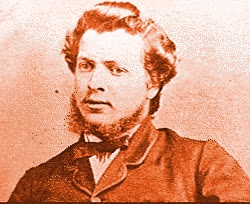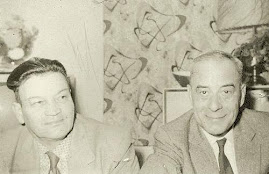This certainly looks like it will change the scope of how some of the Aboriginal land claims of the future will be addressed.
http://www.lawtimesnews.com/index.php?option=com_content&task=view&id=3989&Itemid=82
Supreme Court rejects massive land claim
By Robert Todd, April 14, 2008
The Supreme Court of Canada has unanimously rejected an aboriginal land claim in a decision one lawyer calls a case of “willful blandness.”
The case involves land in southeast Edmonton that is now believed to be worth $2.5 billion.
"The government has stopped this matter from going to trial and literally closed the courthouse door on these people,” says Lang Michener LLP lawyer Eugene Meehan, chairman of the firm’s Supreme Court practice group who argued the Canada (Attorney General) v. Lameman case.
“This test case will be taken like a hammer, and jurisprudentially it’s going to look like a nail.”
Lawyer Mark Kindrachuk, who represented the Crown in the case, says lawyers should take note of the court’s emphasis in Lameman of summary judgment procedures and limitation periods in the aboriginal law context.
“What’s apparent here is that they’ve confirmed that limitations defences are legitimate and applicable in aboriginal cases, and even in cases founded on alleged breaches of treaty obligations,” he says.
The court said, “The facts are shrouded in the mists of time and some details are disputed,” but said the case dates back to 1877, when the Papaschase Indians as part of a treaty received a reserve in what is now southeast Edmonton. In 1886, Chief Papaschase and other band members traded their treaty rights and rights relating to the reserve for cash, wrote the court.
In 1889, three families the government believed to be remaining band members agreed to give up their interest in the reserve, and the government agreed to hold the proceeds of any sale of the land in trust to be paid to band members and their descendents, wrote the court. The people involved in this deal are believed to have joined the Enoch band, which the government paid in accordance with an 1894 deal involving two surviving band members who agreed to surrender the reserve.
In 2001, plaintiffs in the Lameman case, who claim to be descendents of Papaschase band members, began a court action against the government, claiming, among other things, that it had wrongfully allowed band members to “take scrip” without giving them a full view of the consequences of doing so, wrote the court. The allegations “gave rise to causes of action for breach of fiduciary duty, fraudulent and malicious behavior, and treaty breach,” wrote the court.
The Alberta trial judge found that the claim consisted of three triable issues: whether the reserve allotted to the band was of the proper size, whether the government correctly gave out money acquired during the sale of the reserve, and whether the band’s treaty rights to food had been contravened, wrote the court.
But the trial judge also found that the plaintiffs lacked standing, they were claiming collective rights of a band that no longer existed, and that they weren’t members of the band, wrote the court.The trial judge also found that the claims were barred by the Limitation of Actions Act, “with the exception of the claim for an accounting of any proceeds of sale the Crown might still have in its possession,” wrote the court.
However, a majority of the Alberta Court of Appeal found most of the plaintiffs’ issues were triable, wrote the court. The government appealed to the Supreme Court asking for dismissal of the court action in a summary judgment.
The SCC ruled the Limitation of Actions Act bars the claims, and “There is ‘no genuine issue’ for trial. Were the action to proceed to trial, it would surely fail on this ground.”
The court rejected the claim, “except for an accounting of the proceeds of sale, which is a continuing claim and not caught by the Limitation of Actions Act.
”The court noted that it previously found in Wewaykum Indian Band v. Canada that aboriginal claims are subject to rules on limitation periods. The court stated in that case: “Witnesses are no longer available, historical documents are lost and difficult to contextualize, and expectations of fair practices change. Evolving standards of conduct and new standards of liability eventually make it unfair to judge actions of the past by the standards of today.”
The court said that the applicable limitation period gave the plaintiffs six years, from as early as 1974, to bring forth their action.
“There is no explanation for how, as members of the Papaschase Descendants Council, they could have been unaware of these matters, with due diligence, when some Papaschase descendents were aware of the Enoch band’s claim.”
The court also noted that, “A summary judgment cannot be defeated by vague references to what may be adduced in the future, if the matter is allowed to proceed . . . A motion for summary judgment must be judged on the basis of the pleadings and materials actually before the judge, not on suppositions about what might be pleaded or proved in the future. This applies to aboriginal claims as much as they do to others.”
The court further wrote, “The summary judgment rule serves an important purpose in the civil litigation system. It prevents claims or defences that have no chance of success from proceeding to trial.
Trying unmeritorious claims imposes a heavy price in terms of time and cost on the parties to the litigation and on the justice system. It is essential to the proper operation of the justice system and beneficial to the parties that claims that have no chance of success be weeded out at an early stage.”
Meehan says, “The right to a trial is on trial here. A treaty is an ongoing obligation, and a breach of that treaty is therefore an ongoing breach. These very real people want a trial so they can be heard. The practical result is that they get no trial and not a single aboriginal voice got heard.”
But Meehan says perhaps the most important aspect of the judgment involves its interpretation of the division of powers.
“This judgment assumes, with no discussion, that provincial statutes apply to a federal jurisdiction,” he says, pointing to paragraph 14 of the ruling that states, “Pursuant to s. 13 of the Limitations Act, S.A. 1996 . . . aboriginal claims are governed by the previous Limitation of Actions Act.”“
By that single sentence, the provinces can now legislate in a federal jurisdiction,” says Meehan, “because Indians, and lands reserved by Indians, is an exclusive federal jurisdiction, pursuant to s. 91(24) of the Constitution Act.”
The SCC may not have meant for the portion of its ruling to indicate that, Meehan says, “but that’s what the sentence says.”
“Some may say this is a narrow, technical decision,” he says. “Others may jurisprudentially say this is a case of wilful blandness.”
Wednesday, April 16, 2008
An Article from Law Times
Posted by
MetisMama
at
6:01 AM
![]()
![]()
Subscribe to:
Post Comments (Atom)





4 comments:
"Evolving standards of conduct and new standards of liability eventually make it unfair to judge actions of the past by the standards of today."
EXACTLY - How can we judge something that happened over 130 years ago by todays standards. To do so would be like saying,"OK, we will now confiscate all lands of those who owned slaves in the 1800's and give it to the descendants of those slaves for the work which had never been paid for."
Totally right in what the legal system is doing here. Many of my ancestors lost their script to dishonest people and the government. My family would have most likely been better off if we would have been treated fairly, but we weren't. Hindsight is 20/20 all the time and we have to live with the way things turned out. Too much time has passed, get on with our lives and live for today not yesterday.
Regarding the article from Law Times. Please be kind to we old Michif and print this stuff in black, the light green print is very hard to read. It's amazing, I can still spot a muskrat a half mile away but I sure have trouble on this small off colored print.
Sorry - hope the change in print will help.
A little off topic, but still close, on another post sometime back someone mentioned that the FN's had a right to a reserve and all that goes with it. I spoke out many times about reserves and how they are destroying our FN cousins. According to
http://www.canada.com/calgaryherald/
news/cityplus/story.html?id=5cfba827-
c30a-464d-933a-2d335072287f&p=2
It is telling something that I have said all along.
"According to the last census, only 22 per cent of Alberta's aboriginal people even live on reserve anymore. More and more, they've given up on the racial isolation and the despair of the reserves, in search of better lives elsewhere.
How much more suffering must there be before we admit that our paternalistic 19th-century "bantustan" model of aboriginal governance has been a disaster -- and that Asia Saddleback's generation deserves better?"
Metis need to look closely at what is happening and make sure we don't follow our FN cousins down the toilet.
Post a Comment